When will cicadas arrive in Delaware this year? Here's what you need to know
If you’ve never encountered cicada swarms before, consider yourself lucky.
And if you have had to dodge the flying insects, add yourself to the lucky list anyway because Delaware will not be welcoming a cicada brood this year.
What is a cicada?
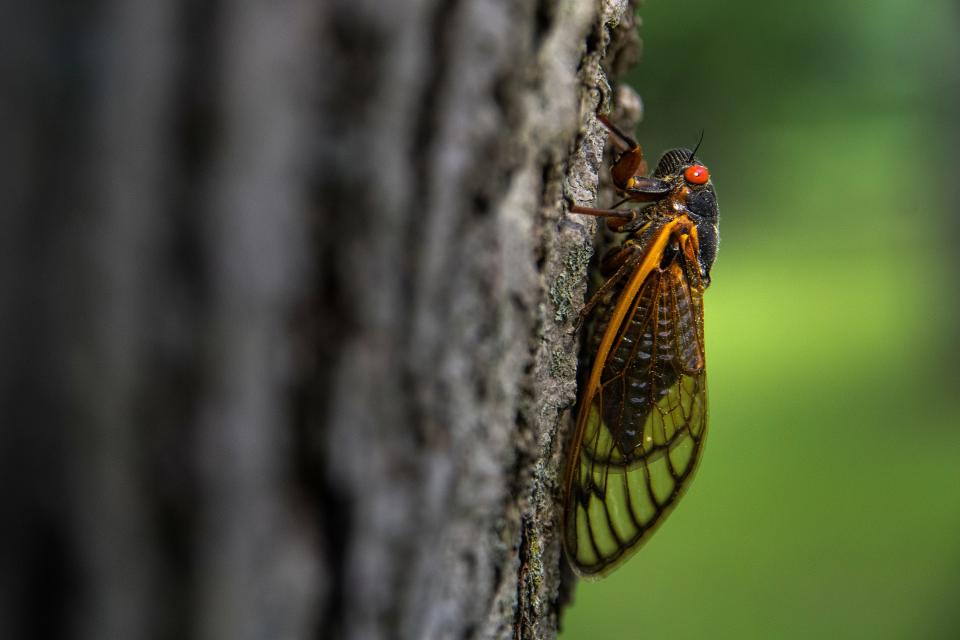
Out of the more than 3,000 cicada species, there are only two types of cicadas: annual and periodical, according to National Geographic Kids.
Annual cicadas, also known as dog-day cicadas, emerge from the ground at different times each summer and are not the fleets of broods seen during some years. They are usually dark with greenish markings and avoid predators by camouflaging themselves in trees and flying away to escape harm.
Periodical cicadas all emerge from the ground at the same time in a brood, containing millions or even billions of the insect, and appear after a dormant period of either 13 or 17 years. They have orange bellies, black backs and red eyes.
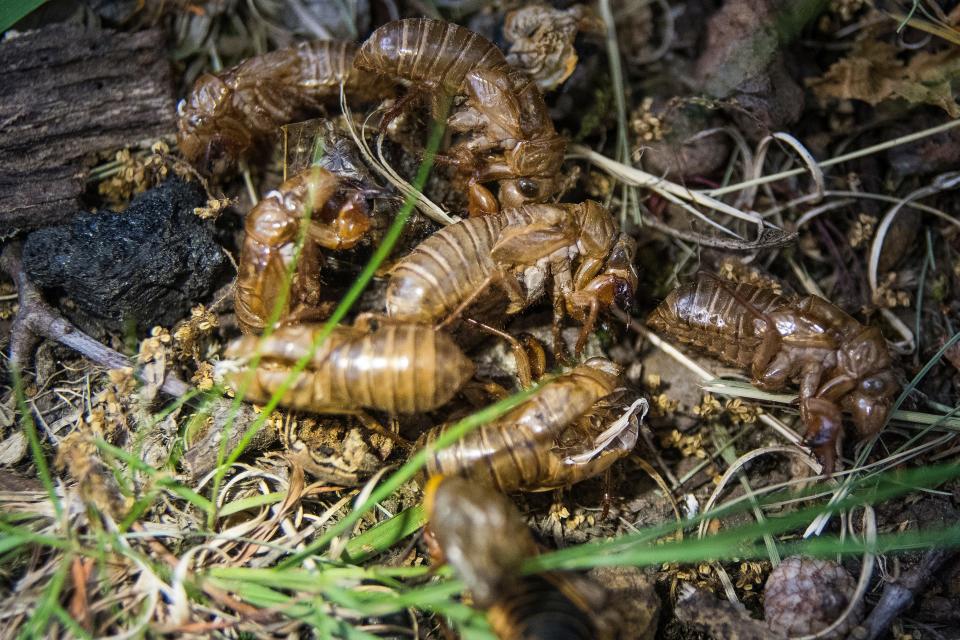
Periodical cicadas are only found in the central and eastern parts of the country, so unfortunately for Delaware, the state is right in the line of hazard. Due to their large population, it is difficult to get rid of them because no predator can eat enough of the bug to make a big enough dent in their presence, according to National Geographic Kids.
Male and female cicadas emerge aboveground at sunset and shed their skin on the trunk of a nearby tree, transforming from a nymph to an adult. Afterward, they mate, lay their eggs and die after about five weeks above ground.
In case you’re wondering, female cicadas each lay between 200 and 400 eggs in tiny holes they make in the branches of trees and shrubs, so even though their lives are short-lived, they sure know how to make sure the legacy continues.
Will cicadas be in Delaware this year?
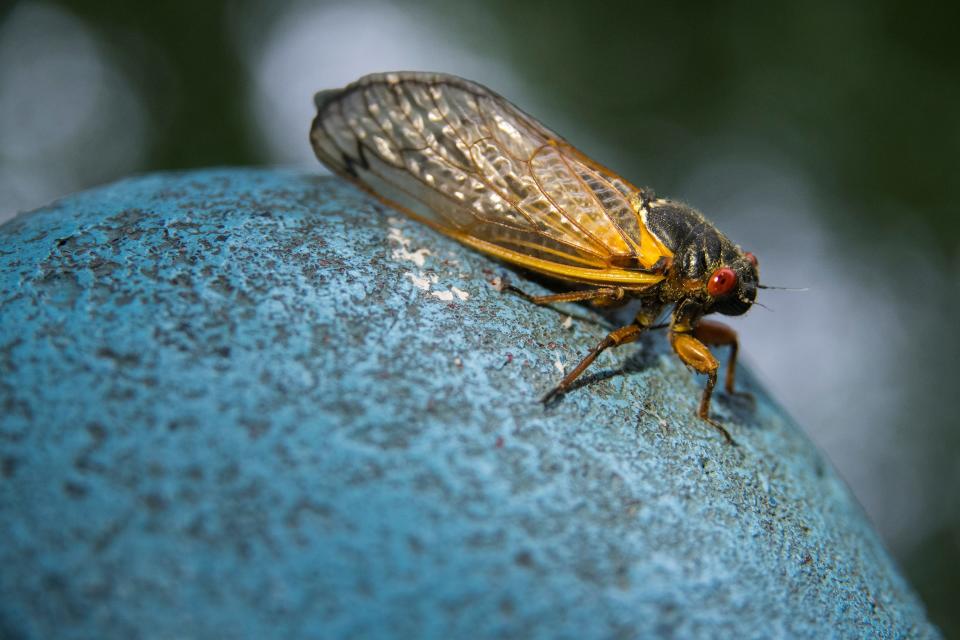
Yes, but not in the way you might be worried about.
According to a cicada brood map from the United States Forest Service, part of the Department of Agriculture, Delaware is known to see Brood X, a species of the 17-year periodical cicadas.
Brood X cicadas last swarmed the state in 2021, meaning they are not due for another First State appearance until 2038. This is the same brood that appeared in Delaware in 2004.
“You might see one or two, because there are often outliers,” said Brian Kunkel, an Ornamentals Integrated Pest Management Extension specialist at the University of Delaware. “So, we could have some that are late to the party, but again, they’re missing the whole thing.”
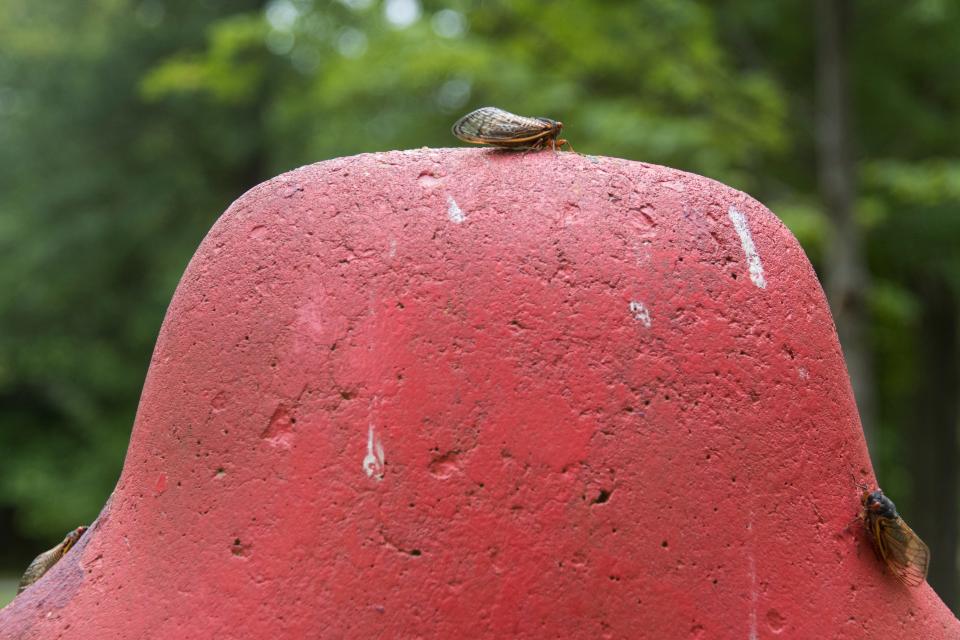
When they do come out, during warmer weather in spring and summer, periodical cicadas are usually found anywhere in Delaware except in southern portions of the state.
While reasons for this vary, Kunkel says the sandy soil in southern Delaware may not provide desirable hatching conditions for cicada larvae.
“Once you get south of the canal, your likelihood of seeing cicadas declines drastically,” he said.
As for the annual cicadas, no part of Delaware is spared. They can be found up and down the state once they emerge.
What is that noise cicadas make?
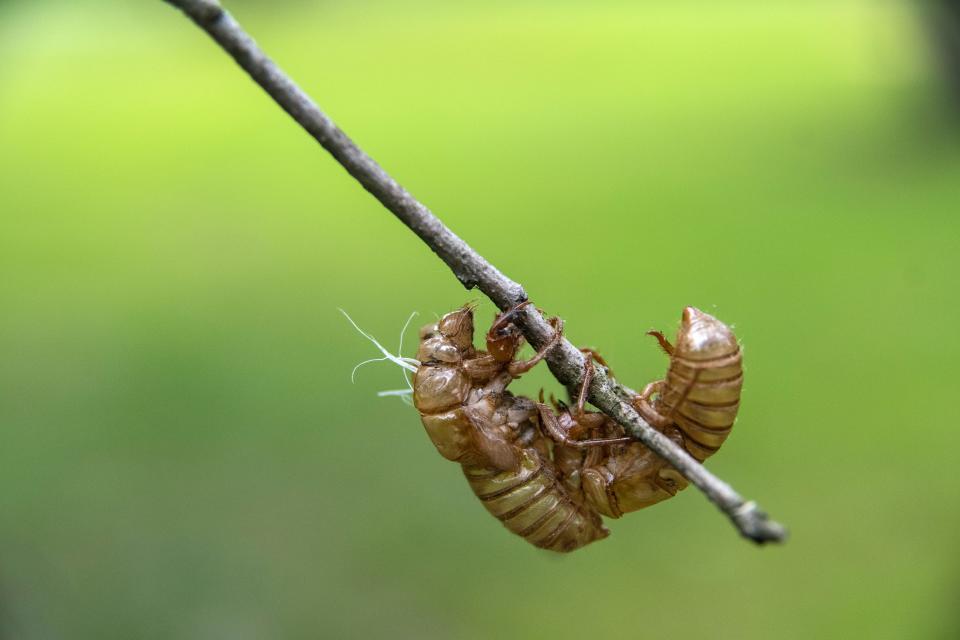
If cicada season arrives and you have yet to see one, they’re noisy enough to immediately let you know when they’re around.
Male cicadas create shrill buzzing sounds using the rapidly vibrating drum-like plates on their abdomens to attract a mate. If the female cicadas like the sound, they make a clicking sound with their wings, according to National Geographic Kids.
While we don’t know if this constitutes falling in love and living happily ever after, we do know that this noise leads to the creation of offspring, ensuring years to come of buzzing cicada swarms.
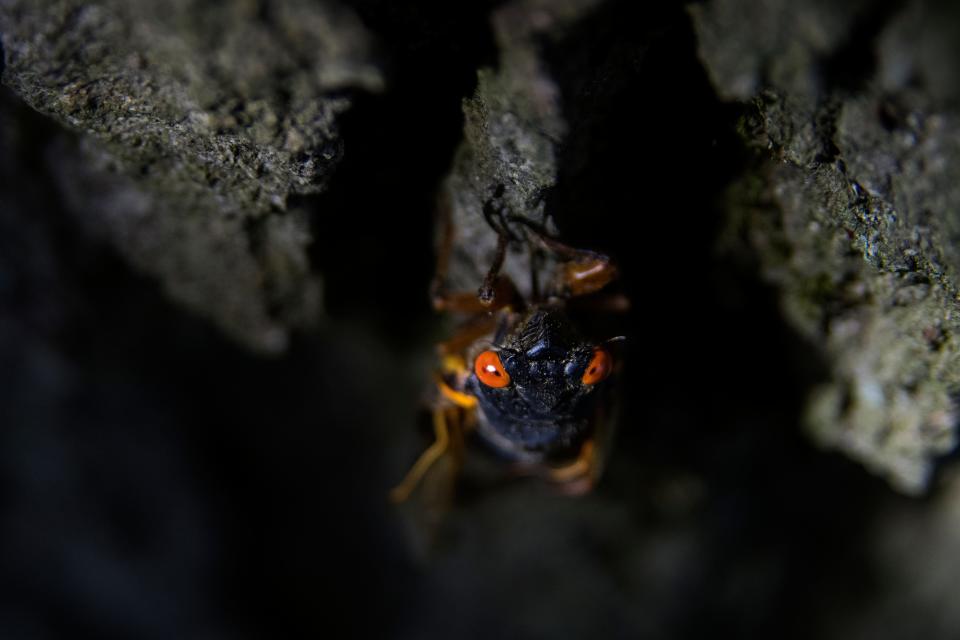
“You’ll hear their music pretty much all day. I think in the evening they’re quieter,” said Kunkel.
Although the incessant noise isn’t ideal, there is a saving grace:
A variety of non-aggressive wasps have an appetite for the annual cicadas, helping to keep their population in check and giving you a bit of a reprieve from the daily buzzing you’ll hear when the annual cicadas arrive in July and August.
How are cicadas handled in Delaware?
Delaware does not have any special control measures in place for cicadas because they are naturally occurring in the area and are not considered to be an introduced pest, said Christopher Wade, environmental program administrator for the Delaware Department of Agriculture.
Although some people might be wondering if and how they can get rid of the few stragglers that appear this year, Wade says cicadas are actually a beneficial insect species, providing a food source for birds and other animals, and larvae providing soil aeration – the exchange of gases between the atmosphere and soil – while developing.
During years where periodical cicadas are present, pesticide application is not a viable option because cicadas emerge in waves. The only way for pesticides to work is to spray every few days to hit newly emerged adults, but applying pesticides that frequently would cause more harm than good, impacting pollinators, beneficial insects, pets and birds and other wildlife, said Wade.
Do cicadas cause any damage?
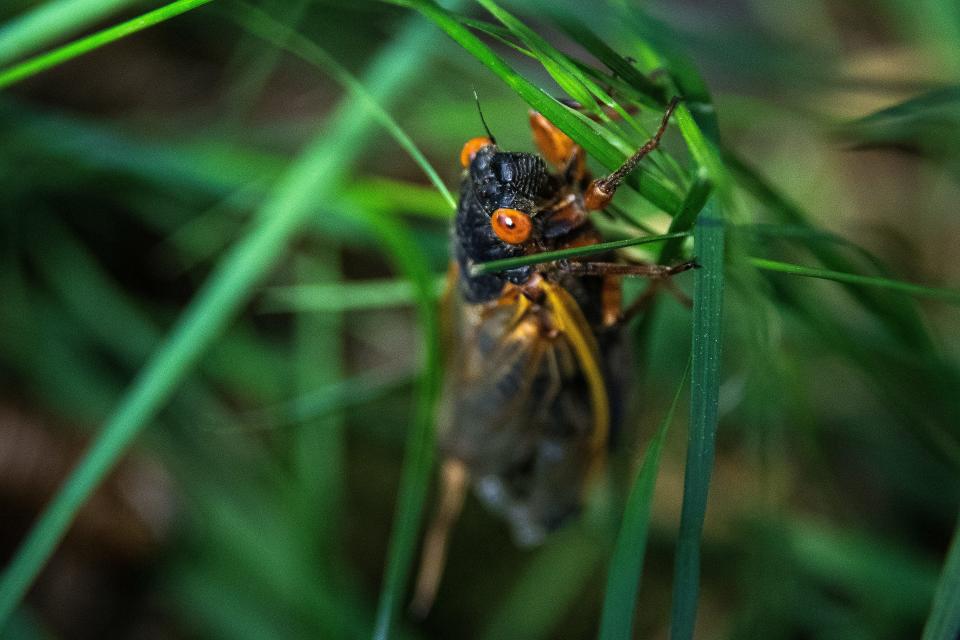
During the egg-laying process, cicadas can damage the tips of tree branches through an act called “flagging,” which leaves long scars in tree branches due to the herringbone position the eggs are laid in.
Flagging won’t impact plants or large trees, but thin-diameter twigs and branches are at risk, said Kunkel.
“For the periodical ones, if you’re gonna have them in your area, then you could put some netting over smaller trees and shrubs if you wanted to,” said Kunkel. “The annual, or the dog day, cicadas do the same thing, but their population never gets to the point to do that much damage to see.”
Wade adds that if you are concerned about the impact of cicadas on your shrubbery, you can delay the planting of any vulnerable small trees or saplings until the fall.
If you think the trees on your property have been severely damaged by cicadas, the Delaware State Forest Service provides tree health assessments to help homeowners.
Got a tip or a story idea? Contact Krys'tal Griffin at kgriffin@delawareonline.com.
Lights coming back soon: Boathouse Row lights to be displayed again in special relighting ceremony in March
Tunes to travel for: Worth the trip: Taylor Swift, Drake, Olivia Rodrigo & more huge concerts for Delawareans
Development: Sussex: 128-lot subdivision in Harbeson gets 1st approval; auto shop effectively shut down
This article originally appeared on Delaware News Journal: What to know about cicadas in Delaware. Here is when they will arrive

